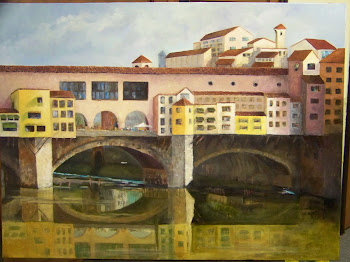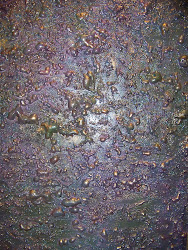For some reason, a simple sauce can make an ordinary dinner an extraordinary experience. A perfect sauce can make you smile and your mouth water years later, just remembering that taste. At the same time, the thought of making a sauce sends fear rippling down the spines of some cooks! So, today’s blog is about making sauces, good sauces, successful sauces. Read on, then get your saucepans and wooden spoons ready, you are going to want to try a few!
The number one thing to remember when making a sauce is
don’t ever cut corners! If it calls for butter, use the real thing. If it calls for 2 cups of heavy whipping cream, don’t start thinking about your waistline. If you have a weight problem or heart disease, skip the sauce, eat extra veggies instead.
To be a good saucier, a sauce chef, you need to think like a sauce purest.
That said, let’s get going on some savory sauces!
The most basic of sauces, is
Classic Bechamel: White Sauce
1 cup milk
2 bay leaves
2 tablespoons unsalted butter
2 tablespoons flour
1 Pinch salt and white pepper
2 garlic cloves, crushed
1. In a small saucepan, heat the milk and 1 bay leaf to a gentle simmer, stirring so it doesn't scorch the bottom of the pan. Keep the milk on low heat.
2. Make a white roux by melting butter over low-medium heat in a thick-bottomed saucepan. Just as the foam subsides, add the flour, stirring constantly with a wooden spoon or whisk to prevent lumps. Cook for 2 to 3 minutes to coat the flour and remove the starchy taste. Do not allow to brown. Remove from heat, then gradually add a bit of the warm milk to the roux and whisk vigorously. Return the saucepan to the heat and bring up to a low simmer, continuing to add more milk and whisk. Cook for 5 minutes until sauce is thick enough to coat the back of a spoon. Check seasoning; add salt, white pepper, garlic and the remaining bay leaf.
3. To prevent a skin from forming as the sauce cools, lay a piece of plastic wrap directly on the surface.
4. Serve with fish, shellfish, vegetables or egg dishes. Bechamel is also an ingredient in Lasagna.
The next sauce to master is
Classic Beurre Blanc: White Butter Sauce
1/3 cup champagne vinegar
1/3 cup dry white wine
2 shallots, finely chopped
1/2 lemon, juiced
2 bay leaves
1/2 cup heavy cream
1/2 pound unsalted butter (2 sticks) cubed
Salt and pepper
2 tablespoons chopped chives
1. In a heavy 2-quart saucepan, combine vinegar, wine, shallots, lemon, and bay leaves to make an infusion. Simmer over medium heat for 5 to 8 minutes until the mixture is reduced to a wet paste, about 2 tablespoons. Add the cream and continue to simmer until reduced again to about 2 tablespoons. Cream is added to make the sauce more stable and less likely to separate.
2. Reduce the heat to low and remove the bay leaves. Whisk in the chunks of butter in small batches. The butter should melt without the sauce getting too hot, producing a creamy emulsified sauce. Do not let the sauce go over 130 degrees F, where it will separate. If the sauce starts to break, remove from heat, add 2 ice cubes and whisk until it cools down and comes back together. Season with salt and pepper, fold in the chives, and serve immediately. Keep covered in a warm place for a few hours, if needed.
3. Serve with fish or vegetables.
Now for
Classic Mornay Sauce2 1/2 tablespoons butter
3 tablespoons all-purpose flour
2 cups warmed milk
1/4 teaspoon salt
1/8 teaspoon white pepper
1 pinch freshly grated nutmeg (optional)
2 ounces grated cheese, such as Gruyere
1. In a medium saucepan melt the butter over medium-high heat. Add the flour and cook, stirring constantly, until the roux is pale yellow and frothy, about 1 minute. Do not allow the roux to brown. Slowly whisk in the milk and continue to whisk until the sauce thickens and comes to a boil, about 2 to 3 minutes. Reduce the heat to a simmer and season with the salt, pepper and nutmeg. Allow to simmer for 2 to 3 minutes. This is now called a bechamel sauce, and may be used as is to top any number of dishes.
2. Stir in the cheese and whisk until melted. If the sauce seems to thick, thin with a little milk.
3. The sauce is now called a Mornay Sauce. Pour over steamed vegetables and serve immediately. If not using right away, cool, cover surface with plastic wrap and refrigerate for several days
Classic Hollandaise Sauce
1/2 cup butter
3 large egg yolks
1 tablespoon plus 1 teaspoon of lemon juice
1/8 teaspoon salt
1 dash cayenne pepper or hot pepper sauce
2 tablespoons hot water
finely chopped fresh parsley, if desired
1. Heat butter in a heavy saucepan until hot and foamy, but not browned. In a small bowl, whisk or beat egg yolks with lemon juice, salt, and cayenne pepper or hot sauce. Gradually beat in butter, then water. Return mixture to saucepan and beat over very low heat until mixture is slightly thickened. Serve immediately or let stand over warm water for up to 30 minutes. If desired, sprinkle with chopped fresh parsley before serving.
2. Makes about 2/3 cup of hollandaise sauce
Classic Brown Butter Sauce with Sage
3/4 cup butter (1 1/2 sticks)
2 tablespoons torn fresh sage leaves
1/4 teaspoon kosher salt, plus more to taste
1/4 teaspoon freshly ground black pepper, plus more to taste
1. melt the butter in a large, heavy skillet over medium heat.
2. Add the sage, let cook until the butter starts to brown, about 3 minutes. Turn the heat off and season with salt, and pepper.

And finally,
Classic Brown Sauce
1 veal shank
2 veal knuckle bones
Salt and pepper, to taste
2 tablespoons olive oil
5 tablespoons tomato paste, divided
2 tablespoons unsalted butter
1 onion, cut in half
1 garlic bulb, cut in half
2 celery ribs, cut in chunks
2 carrots, cut in chunks
1 bunch fresh thyme
1 bottle dry red wine
1 quart water
1 quart beef broth, low sodium
Bouquet Garni (thyme, parsley, bay leaves, peppercorns)
Place the veal shank and knucklebones in a roasting pan, season with salt and pepper and drizzle with olive oil. Roast in a preheated 350 degrees F oven for 45 minutes. When the veal pieces are brown, brush them with 3 tablespoons of tomato paste and season again. Raise the oven temperature to 450 degrees F and return the pan to the oven for 15 more minutes. Melt butter in a large stockpot over medium heat. Saute the mirepoix vegetables and thyme in the butter to coat then stir in the remaining tomato paste and continue cooking until the vegetables are caramelized. Pour in the red wine to deglaze, stir. Transfer the browned bones to the stockpot. Whisk in the water and broth. Add the bouquet garni and bring the sauce to a boil. Simmer gently for about 3 hours, skimming periodically. Strain the sauce through cheesecloth or a chinois to remove the bones and vegetable solids. Continue to cook for 1 hour more, skimming any foam that rises to the top, until the sauce is reduced to 2 cups and nicely thickened. Taste for strength and seasoning. May whisk in a pat of softened butter to finish the sauce.
. Serve with meats or poultry.
I’ll do Dessert/Sweet sauces soon!















































